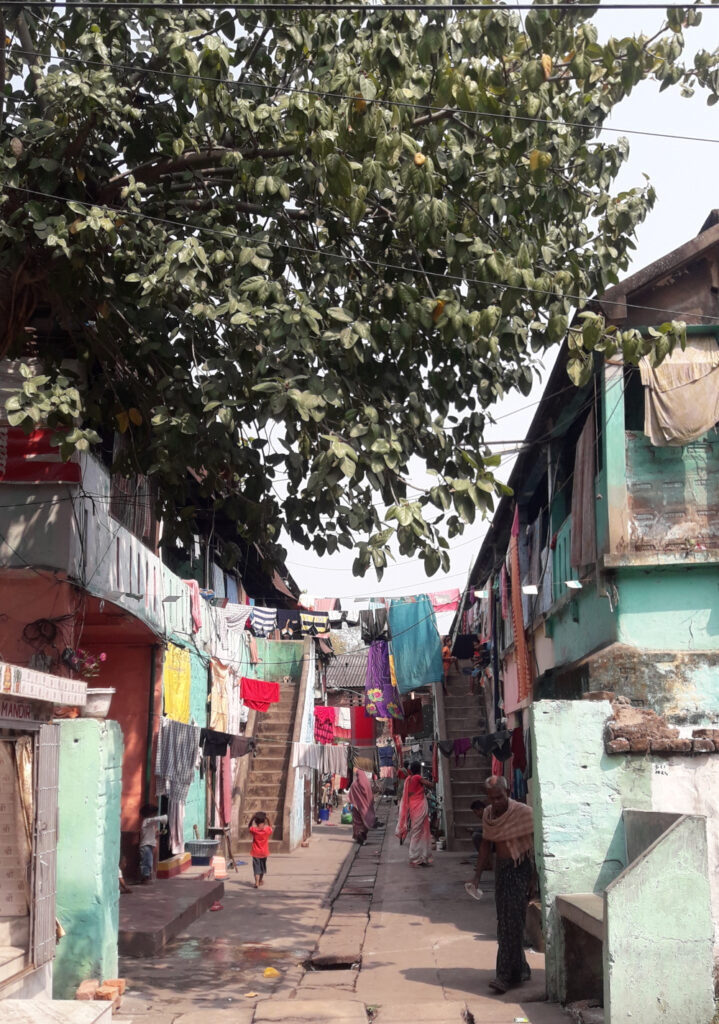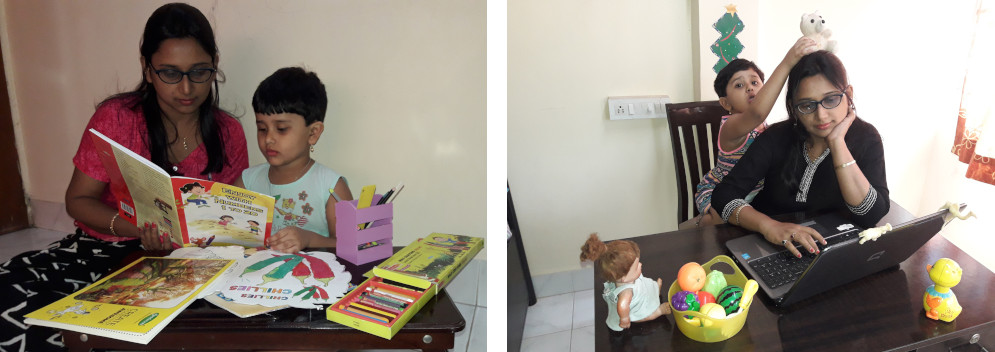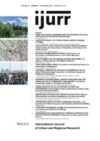“It is almost 3:00 a.m. and I am still awake. The sounds of ambulance sirens and deadlines for submission kept me sleepless till this time. My head is burning as so many thoughts (negative) are emerging and roaming in my mind. I am trying to cope with this tough time, but the upward Corona-meter is exaggerating my anxiety and I am unable to concentrate on my work, my research. The pressure of handling a household with a kid and work deadlines is making my life exhausting. I am trying to fight against all these difficulties but alas! Work from home has transformed into work for home in my case.” (5 July 2020; Author’s Diary)
With the sudden imposition of worldwide lockdown due to the recent pandemic, the world was confined within the four walls. The new normal (though I doubt about its being normal!) way of life has stopped the movement of the world in all possible ways. The government of India imposed the nationwide lockdown from the last week of March 2020, affecting all sectors including academia. Schools, colleges, and universities shut down for undefined days and it hit early career researchers and PhD scholars hard, as PhD students play a pivotal role in economic growth, innovation, and knowledge advancement (OECD, 2019). Being an early career urban researcher and a mother of a three year old, productivity for work has become a myth, a social construct. The ‘new normal’ situation with the idea of ‘work from home’ has reshaped and redesigned the work pattern across the globe and I am not an exception. Through this article I will share the ways my urban research changed due to the pandemic, the precarity and negotiation I have faced, and the gendered effects associated with these changes.
My broad research interests include suburban land transformation, the life and livelihood of mill workers, the political economy of land, and negotiations and dynamics associated with land transformation of a suburban town located in the Indian state of West Bengal. I presented my PhD research proposal in December 2019 at the Tata Institute of Social Sciences (TISS) Mumbai, India and shifted to my field site in West Bengal (approximately 2050 kilometers away) within a week. From the end of December 2019 to the first week of March 2020 I did my pilot study, was able to set up contacts for fieldwork, collected some data, and came back to Mumbai to discuss further gaps and new directions with my research supervisor. My next step was to go back to my field site at the end of April 2020 to collect my remaining data through urban ethnography. Unfortunately, due to the imposition of the lockdown, I have been stuck in Mumbai, in between my data collection process for an indefinite period. This prompted me to change my research methodology as well.

The narrow lanes and congested colony of mill workers in Serampore, a suburban town in West Bengal, India reflecting the increased difficulties to carrying out fieldwork during pandemic. Photo: Angana Banerjee.
Negotiated methodology and data collection process
To understand land transformation and its associated dynamics, tensions, and negotiations, in-depth interaction with mill workers, developers, local residents, municipal workers, and urban planners are a very important part for my research. Through thorough interaction and in-depth conversations, I try to unfold the untold dynamics associated with land transformation. The sudden lockdown initially paused my data collection plan and I was very worried about completing my research within the stipulated time frame. Newspaper and television highlights depicting the hike in the number of deaths and the worsening health conditions worldwide due to COVID 19, affected my mind. However, after having a virtual discussion with my research supervisor during the lockdown period, initially I started transcribing and analyzing the data I had already collected. From that data, I was able to draw some themes and on that basis categorized the land transformation process within my field site. As travelling to other states was restricted, I conducted additional interviews over phone with contacts I had already obtained during my pilot study. Thus, this revised method emerged as a new tool for my data collection process.
My transcription of previous interviews and recent phone interviews helped me realize the importance of understanding the history of my field site, as it has a hidden effect on the recent land transformation process. Therefore, I started to acquire information about the history of the place with the help of available secondary documents and information available in different digital platforms. Social media emerged as an extremely useful tool for my case. I got a chance to hear several important online lectures, organized by various groups working on the same place and thus, digital ethnography emerged as a new method for my data collection. Lectures organized via online platforms helped me understand “how digital technologies produce both new possibilities for political activism and also for state oppression, creating conditions for the commodification and decommodification simultaneously” (Miller, 2018). Not only that, available digital information (via e-newspapers, online local articles) about the field also added an extra advantage during this time. Thus digital evidence emerged as an important tool of the digital ethnography method I employed during this time. Following Blanchette (2011); it can be said that the world of ‘bits’, computers, memes, and digital photography have created a material side to the world. Digital ethnography has created a scope of growing in terms of scale, form, and creating the new dimensions of being modern. There may be a limitation of physical interactions where exchange of emotions are also involved; however, digital ethnography opens up a scope for researchers like me to stay connected with respondents during this tough time via several social media platforms. Other important techniques for data collection that emerged include video calling, text-based instant messaging, and online surveys. For my analysis, I was only able to connect with a few people through these modes, as most of my respondents were not able to use the required technology properly and network connectivity was a major constraint. In order to acquire and analyze data, I had to rely on print media, broadcast media, and published blogs. I have thus changed my methodology to cope with the current crisis.
The gendered consumption of space
In India, women make up 19.9% of the total labor force and society still believes care giving and all household tasks are meant for women, following the old patriarchal ideology. All the schools and daycare centers during this period were closed for undefined days, forcing children to sit at home and continue their education via an online modality. Being a mother, it was hard for me to devote time to my own work seeing how children during this period were affected. The way every day is perceived and performed during this period for working women is like a roller coaster where we try to manage both our profession and home. The positive tagline “Using quarantine time for some productive use” flashing over media platforms like Facebook, Twitter, etc. seemed quite contradictory to me and “work from home” transformed into work for home. My creativity and ability to strive for excellence have been challenged as I believe the spatial separation of the workplace and home is extremely important. The notion behind “construction of home as a woman’s place” (Massey, 1994) and the integral bonding of women and home reflects the significance of gender over space and place. The pandemic has not only compelled me to revise research methodologies, but also produces and reinforces the inequalities in the way men and women scholars contribute to knowledge production.

(Left) Caregiving: a gendered perspective (Author engaging with her child). (Right) The challenge of work from home for a working mom during the pandemic (Author working from home). Photos: Avimanyu Banerjee.
Challenges and conclusion
Being an urban research scholar, my study needs continuous and in-depth interaction with the field, but the pandemic has restricted the accessibility of the field site as there are several constraints on interstate movement. Travelling with a child in a dense locality like my field site was another challenge. My field notes and physical interviews have been replaced with telephone or Zoom calls and thus, technology has helped me to overcome some of the precarity caused by this crisis. I missed my involvement as a researcher with my field. I missed the essence of busy crowded roads, narrow gullies of the mill colony, the transforming mill lands, and the everyday interactions with workers and residents in the small suburban town. I personally believe the telephone interviews are extracting information, but are lacking emotions which social science research needs. But at the same time, I would say that modern technology has enabled me to stay connected with the field. Though there are options for online meeting and filling up online questionnaires for data collection, in my case my respondents’ inability to use technology was another big challenge. Most importantly, working on a small town with a poor available database during this pandemic was another challenge. However, my research cannot be completed only on the basis of online information, as digital ethnography needs to be considered alongside ethnography to avoid much wider methodological debates (Pink et al. 2016).
Considering the circumstances, I have focused more on literature review and writing aspects, rather than fieldwork. Not only did hindrances with respect to accessing the field and negotiating methodology affected my research during this tough time, but for me, working as a woman scholar having a child reflected a gendered outcome. I think mothers across the country worked double and triple shifts managing our roles as primary caregivers, juggling kids, handling financial constraints, households, as well as jobs. This essay thus opens up an example about how an urban researcher has negotiated this pandemic and it also points to the gendered precarity within the home. Following Bourdieu (1972), it can be said that the orientation of the house is fundamentally perceived from the viewpoint of men and for men only. Thus, I believe the use of space during this time opens a scope for analyzing power relations and inequality. This pandemic is teaching me how the world has shrunk to our homes, and to be agile and flexible in our approaches whether in terms of research or home life.
Angana Banerjee (Twitter) is a Doctoral Scholar at Centre for Urban Policy and Governance, School of Habitat Studies, TISS, Mumbai. Her research interest includes urbanization, urban governance, peri-urbanization and restructuring of urban spaces.
All essays on Becoming an Urban Researcher During a Pandemic
Introduction: On Urban Field Research During a Pandemic
Liza Weinstein
Proximity and Distance: Navigating a Field of Tension in Urban Qualitative Research on the German Far Right During COVID-19
Gala Nettelbladt & Leon Rosa Reichle
Doing Fieldwork in Informal Settlements in Buenos Aires Metropolitan Area During the Pandemic
Francesca Ferlicca
What are Cities like when Affective Encounters Change?
Hang Wei
Hope in Action – Responding to the Pandemic as Researcher-Activists?
Taru
Credence, Chlorine and Curfew: Doing Ethnography Under the Pandemic
Sara Nikolić
More Haste, Less Speed: Experiences of Conducting Doctoral Research During a Pandemic
Alison Pulker
“Stay at Home”: Navigating Urban Research and Fieldwork During a Pandemic
Angana Banerjee
The Complex Production of Urban Research During the Covid-19 Pandemic
Safa H. Ashoub
The Hammer and the Dance of Urban Research During a Pandemic: Waves of Despair and Hope (A PhD’s diary)
Tatjana Boczy
Published online May 2021
Related IJURR articles on Becoming an Urban Researcher During a Pandemic
Rethinking Urban Epidemiology: Natures, Networks and Materialities
Meike Wolf
Comparative Urbanism: New Geographies and Cultures of Theorizing the Urban
Jennifer Robinson
The Urban, Politics and Subject Formation
Lisa M. Hoffman
Who’s Afraid of Postcolonial Theory?
Ananya Roy
The Urban Question as Cargo Cult: Opportunities for a New Urban Pedagogy
Rob Shields
The Comparative City: Knowledge, Learning, Urbanism
Colin McFarlane
© 2021 THE AUTHOR. INTERNATIONAL JOURNAL OF URBAN AND REGIONAL RESEARCH, PUBLISHED BY JOHN WILEY & SONS LTD UNDER LICENSE BY URBAN RESEARCH PUBLICATIONS LIMITED
This is an open access article under the terms of the Creative Commons Attribution-NonCommercial-NoDerivs License, which permits use and distribution in any medium, provided the original work is properly cited, the use is non-commercial and no modifications or adaptations are made.
